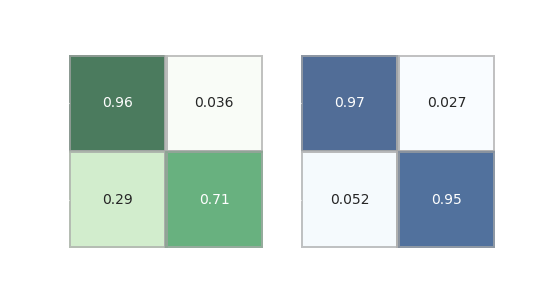Automated Cloud Detection with Machine Learning
Astronomy Machine Learning Deep Learning Allsky-Camera
Motivation
Most (optical) telescopes have to be protected from precipitation to prevent damage to their optics and electronics. For this reason, most observatories use all-sky cameras - cheap, but very sensitive CMOS cameras equipped with fish-eye lenses - that monitor the night sky for incoming clouds. Telescope operators can observe live streams from these cameras to make informed decisions as to whether the current weather situation requires the closing of the telescope dome, or not.
It should be worthwhile to automate this decision-making process so that, for instance, robotic telescopes can close their enclosures autonomously if clouds are present without any human intervention. A very similar system could be used to measure sky quality conditions in a highly unbiased way.
Problem
Unfortunately, the automated detection of clouds in image data is a non-trivial task. Due to varying illumination conditions and cloud thickness, the heterogeneous sky background brightness, and other effects, night sky clouds manifest in different ways in all-sky camera images, hampering their identification. Additional complications arise during twilight or during “bright nights”, when the Moon is up. These complications are exemplified in the animation shown above, in which clouds first appear darker than the clear sky but then brighten significantly after Moon rise.
My hope was that machine learning models should be able to handle this level of complexity easily.
Methods and Data
I tested two different machine learning approaches on this problem:
- a deep learning approach that adopts a ResNet-18 implementation working directly on the image data, and
- a gradient-boosted tree-based model (lightgbm) working on preprocessed and extracted features; these features include metrics like source count and average background brightness, and time derivatives thereof, across a polar grid over each image, as well as additional information on the observation circumstances.
Both models were trained on a set of 1975 all-sky camera images from Lowell Observatory’s Discovery Telescope (formerly the Discovery Channel Telescope) that were randomly drawn from a period of 14 consecutive months. In all images of this set, the presence of clouds on a polar grid was labeled manually.
Results
The results were two-fold:
-
The deep learning approach using the ResNet implementation was only able to reach an accuracy of 85%. This is most likely due to the relatively small sample size for this model type. Better results are possible with a significantly larger sample size.
-
The lightgbm model performs much better with an accuracy of ~95%, which is not likely to improve for larger sample sizes.

Another major selling point for the lightgbm model is the training time. While a meaningful model training process for the lightgbm model takes only a matter of seconds, it takes up to an hour for the ResNet approach.
For the full analysis, please refer to the publication in the Astronomical Journal or the arxiv pre-print version of this publication.
Conclusions
I fully recommend the feature-extracted approach, as it easily outperforms the deep learning approach for this kind of application while utilizing only a fraction of the resources. Given the high accuracy of the lightgbm and the fact that this seems to be the maximum achievable accuracy (i.e., it is not limited by sample size) lets me conclude that this accuracy is only limited by human accuracy in the manual labeling of the training data.
Resources
-
Mommert, M. 2020, “Cloud Identification from All-sky Camera Data with Machine Learning”, The Astronomical Journal, 159, 178., publication, arxiv
-
Mommert, M. 2020: code and example data